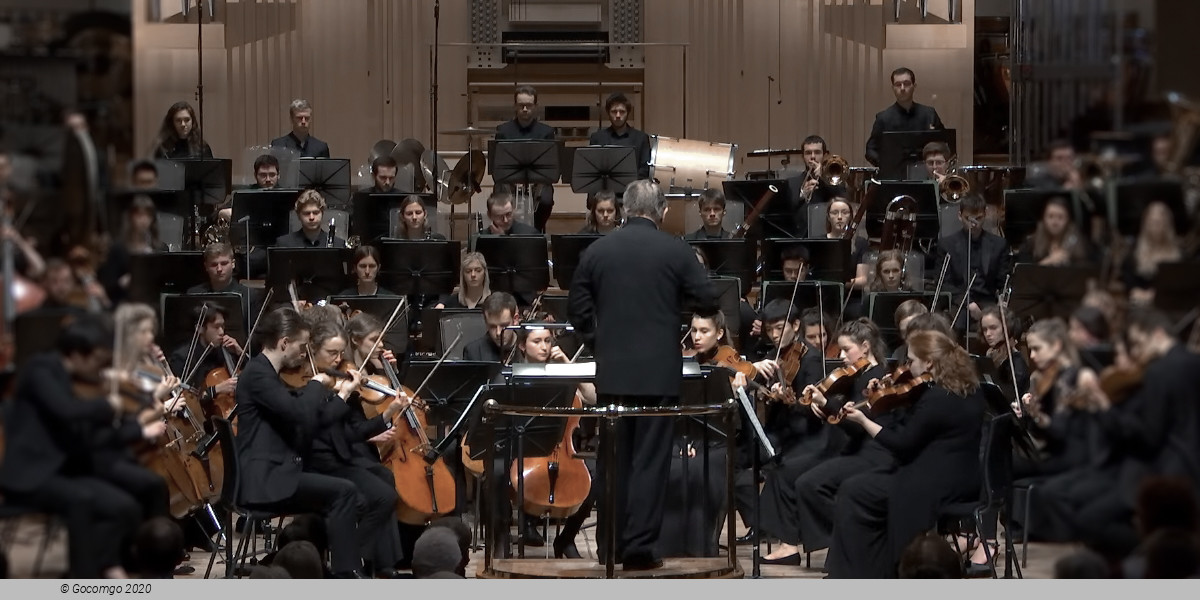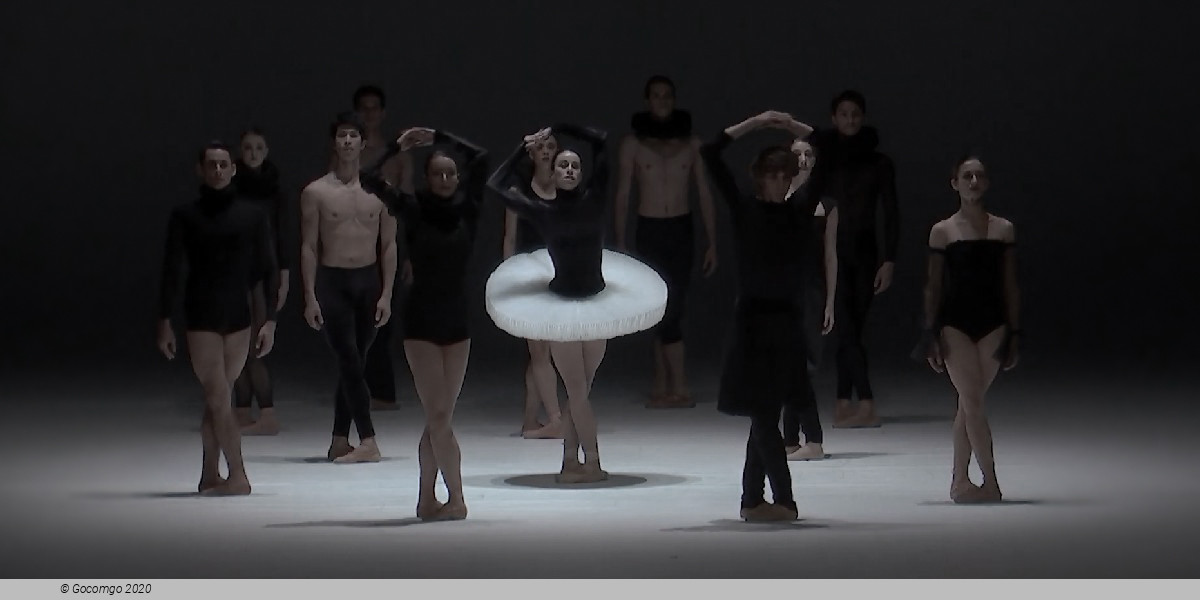Events8 results
About
Aram Ilyich Khachaturian was a Soviet Armenian composer and conductor. He is considered one of the leading Soviet composers.
Born and raised in Tbilisi, the capital of Georgia, Khachaturian moved to Moscow in 1921 following the Sovietization of the Caucasus. Without prior music training, he enrolled in the Gnessin Musical Institute, subsequently studying at the Moscow Conservatory in the class of Nikolai Myaskovsky, among others. His first major work, the Piano Concerto (1936), popularized his name within and outside the Soviet Union. It was followed by the Violin Concerto (1940) and the Cello Concerto (1946). His other significant compositions include the Masquerade Suite (1941), the Anthem of the Armenian SSR (1944), three symphonies (1935, 1943, 1947), and around 25 film scores. Khachaturian is best known for his ballet music—Gayane (1942) and Spartacus (1954). His most popular piece, the "Sabre Dance" from Gayane, has been used extensively in popular culture and has been covered by a number of musicians worldwide. His style is "characterized by colorful harmonies, captivating rhythms, virtuosity, improvisations, and sensuous melodies".
During most of his career, Khachaturian was approved by the Soviet government and held several high posts in the Union of Soviet Composers from the late 1930s, although he joined the Communist Party only in 1943. Along with Sergei Prokofiev and Dmitri Shostakovich, he was officially denounced as a "formalist" and his music dubbed "anti-people" in 1948 but was restored later that year. After 1950 he taught at the Gnessin Institute and the Moscow Conservatory and turned to conducting. He traveled to Europe, Latin America and the United States with concerts of his own works. In 1957 Khachaturian became the Secretary of the Union of Soviet Composers, a position he held until his death.
Khachaturian, who created the first Armenian ballet music, symphony, concerto, and film score, is considered the most renowned Armenian composer of the 20th century. While following the established musical traditions of Russia, he broadly used Armenian and, to lesser extent, Caucasian, Eastern and Central European, and Middle Eastern peoples' folk music in his works. He is highly regarded in Armenia, where he is considered a "national treasure".
Khachaturian's works span a broad range of musical types, including ballets, symphonies, concertos, and film scores. Music critic Edward Greenfield expresses the opinion that Khachaturian "notably outshone other Soviet contemporaries in creating a sharply identifiable style, something which his successors have found impossible to emulate". He composed a great portion of his works in a ten-year span between 1936 and 1946, preceding and following the Second World War. Despite his formal restoration after the 1948 denunciation, Khachaturian only succeeded in composing one internationally acclaimed work in the last 30 years of his life, the ballet Spartacus.
According to James Bakst, what made Khachaturian unique among Soviet composers is "the blending of national Armenian vocal and instrumental intonations with contemporary orchestral techniques". Khachaturian's music is characterized by an active rhythmic development, which reaches either a mere repetition of the basic formula (ostinato) or "a game of emphasis within this formula".
Works
Ballets
Khachaturian is best known internationally for his ballet music. His second ballet, Gayane, was largely reworked from his first ballet, Happiness. Spartacus became his most acclaimed work in the post-Stalin period. These two compositions "remain his most successful compositions". According to Jonathan McCollum and Andy Nercessian, his music for these two ballets "can safely be included among the best known pieces of classical music throughout the world, a fact that is vitalized by perception that these are perhaps the only works through that the world really knows Armenian music". Ann Haskins of LA Weekly suggests that he has thus "made an indelible mark on the world of ballet".
Spartacus was popularized when the "Adagio of Spartacus and Phrygia" was used as the theme for a popular BBC drama series The Onedin Line during the 1970s. The climax of Spartacus was also used in films such as Caligula (1979) and Ice Age: The Meltdown (2006). Joel Coen's The Hudsucker Proxy (1994) also prominently featured music from Spartacus and Gayane (the "Sabre Dance" included). Gayane's "Adagio" was used, among other films, in Stanley Kubrick's futuristic film 2001: A Space Odyssey.
Orchestral music
Khachaturian wrote three symphonies: the First in 1934/5, the Second in 1943, and the Third in 1947.
He also wrote three concertos: the Piano Concerto (1936), the Violin Concerto (1940), and the Cello Concerto (1946).
Other compositions
Khachaturian wrote incidental music for several plays, including Macbeth (1934, 1955), The Widow from Valencia (1940), Masquerade (1941), King Lear (1958).
He produced around 25 film scores. Among them is Pepo (1935), the first Armenian sound film. In 1950 he was awarded the USSR State Prize (Stalin Prize) for the score of The Battle of Stalingrad (1949).
Armenian folk music
Khachaturian is widely known for his use of folk songs of various ethnic groups in his compositions, most notably those of Armenians. Despite not having been born in Armenia, Khachaturian was "essentially an Armenian composer whose music exhibits his Armenian roots". "Many of his compositions evoke an Armenian melodic line. However, his works markedly differed from the conventional orchestrations of folk themes," writes Rouben Paul Adalian. He suggests that Khachaturian's works carry "the vibrant rhythms and stirring pace of Caucasian dance music", but at the same time are "original compositions that reworked that cultural material through new instrumentation and according to European musical canons, resulting in a sound unique to the composer". He was particularly influenced by the folk-song collector, musicologist Komitas, and composers Alexander Spendiaryan and Romanos Melikian. Khachaturian acknowledged that Komitas "singlehandedly laid the foundations for Armenia's classical tradition". In a 1969 article about Komitas, Khachaturian called him his "greatest teacher".
His plans to write an opera "on the destiny of the Armenian people, the tragic fate of Armenians scattered all over the world, their suffering and the struggle" never realized, and his "Armenian Rhapsody for mouth-organ and orchestra, intended for his close friend Larry Adler and the Chicago Symphony Orchestra" remained uncompleted. "Yet the intention, the spirit, was always there." Khachaturian emphasized his Armenian origin, stating:
Other folk music
During his university years, Khachaturian transcribed Armenian, Russian, Hungarian, Turkish and other folk songs. In his mature works, Khachaturian used elements from folk songs of Caucasian (including, but not limited to Georgians), Eastern European (Ukrainians, Poles) and Middle Eastern (Turks, Kurds) peoples. His first ballet, Happiness, incorporates a Ukrainian gopak, Georgian, Armenian and Russian dances and a Lezginka, an energetic dance of many Caucasian peoples. The Masquerade Suite includes a Mazurka, a Polish folk dance music. The ballet Gayane, like its predecessor, features a Lezginka. Act II of Gayane "is filled with Kurdish dances".
Russian classical music
Khachaturian is cited by musicologists as a follower of Russian classical traditions. According to the Toronto Symphony Orchestra, he "carried forward into the twentieth century the colourful, folk-inspired style of such nineteenth-century Russian composers as Rimsky-Korsakov and Tchaikovsky". Like the members of The Five, especially Alexander Borodin and Rimsky-Korsakov, whose works to some extent served him as a model, Khachaturian drew heavily upon "Eastern" and "Oriental" material in creating compositions in various classical genres and styles of European origin. But Khachaturian's cultural identity and rigorous musical training within the Soviet establishment allowed him to penetrate more deeply to the essence of Eastern and Caucasian music and to incorporate it more fully in his mature work, including the ballets. "Never dissociating himself from the traditions of Russian music, he came to be regarded in Moscow as a mouthpiece of the entire Soviet Orient, gathering up all the diverse traditions into a grand generalization," concludes Marina Frolova-Walker.



